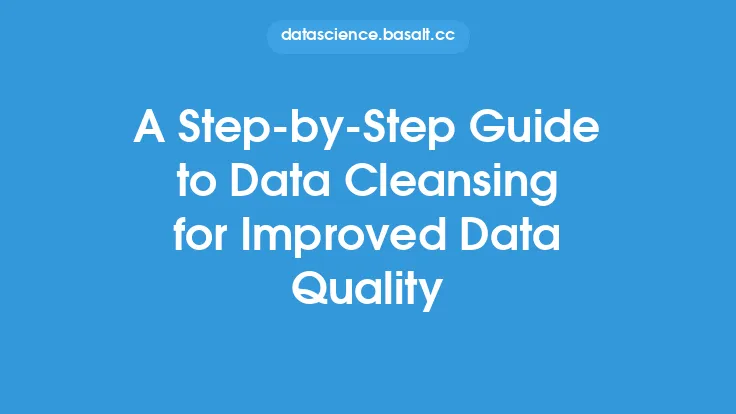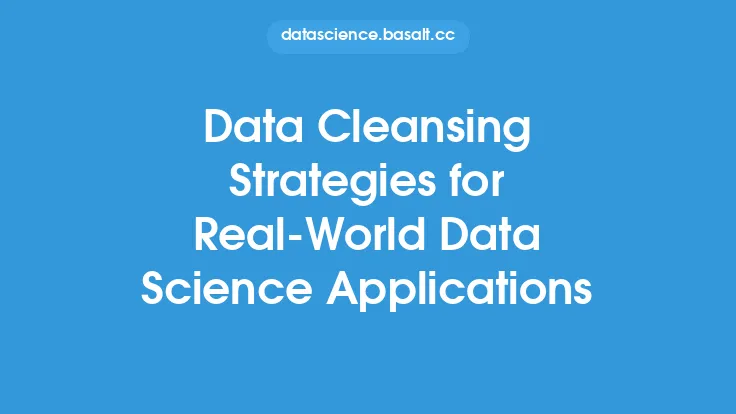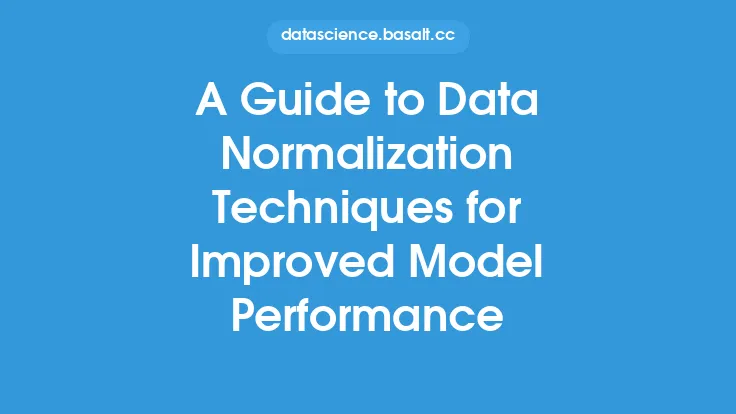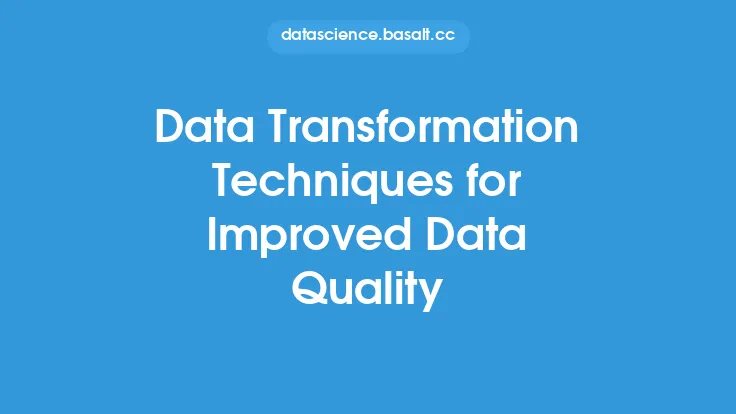Data cleansing is a crucial step in the data science process, and handling missing or duplicate data is a significant aspect of it. Missing data can occur due to various reasons such as non-response, data entry errors, or equipment failures, while duplicate data can arise from multiple sources, including data integration, data migration, or human error. In this article, we will delve into the common data cleansing techniques used to handle missing or duplicate data, providing a comprehensive overview of the methods, tools, and best practices involved.
Introduction to Missing Data
Missing data is a common problem in data science, and it can significantly impact the accuracy and reliability of analysis and modeling. There are several types of missing data, including missing completely at random (MCAR), missing at random (MAR), and missing not at random (MNAR). MCAR occurs when the missing data is independent of the observed data, MAR occurs when the missing data is dependent on the observed data, and MNAR occurs when the missing data is dependent on the unobserved data. Understanding the type of missing data is essential to choose the appropriate technique for handling it.
Techniques for Handling Missing Data
There are several techniques for handling missing data, including listwise deletion, pairwise deletion, mean/median/mode imputation, regression imputation, and multiple imputation. Listwise deletion involves deleting the entire row or observation if any of the values are missing, while pairwise deletion involves deleting only the specific variable or column that contains the missing value. Mean/median/mode imputation involves replacing the missing value with the mean, median, or mode of the observed values, while regression imputation involves using a regression model to predict the missing value based on the observed values. Multiple imputation involves creating multiple versions of the dataset, each with a different imputed value for the missing data, and then analyzing each version separately.
Introduction to Duplicate Data
Duplicate data can occur due to various reasons, including data integration, data migration, or human error. Duplicate data can lead to biased analysis and modeling, and it can also increase the risk of errors and inconsistencies. There are several types of duplicate data, including exact duplicates, partial duplicates, and near duplicates. Exact duplicates occur when two or more rows or observations are identical, partial duplicates occur when two or more rows or observations have some identical values, and near duplicates occur when two or more rows or observations have similar but not identical values.
Techniques for Handling Duplicate Data
There are several techniques for handling duplicate data, including duplicate detection, duplicate removal, and data merging. Duplicate detection involves identifying duplicate rows or observations, while duplicate removal involves deleting or removing the duplicate rows or observations. Data merging involves combining duplicate rows or observations into a single row or observation. Techniques such as sorting, hashing, and clustering can be used for duplicate detection, while techniques such as aggregation and consolidation can be used for data merging.
Data Cleansing Tools and Software
There are several data cleansing tools and software available, including open-source tools such as OpenRefine, Trifacta, and DataCleaner, and commercial tools such as SAS, SPSS, and Oracle. These tools provide a range of features and functionalities, including data profiling, data transformation, data validation, and data quality reporting. They can be used to handle missing and duplicate data, as well as to perform other data cleansing tasks such as data standardization, data normalization, and data formatting.
Best Practices for Data Cleansing
There are several best practices for data cleansing, including data profiling, data validation, data transformation, and data quality reporting. Data profiling involves analyzing the data to understand its structure, content, and quality, while data validation involves checking the data for errors and inconsistencies. Data transformation involves converting the data into a suitable format for analysis and modeling, while data quality reporting involves documenting the data cleansing process and the results. It is also essential to document the data cleansing process, including the techniques used, the tools and software employed, and the results obtained.
Challenges and Limitations of Data Cleansing
Data cleansing can be a challenging and time-consuming process, especially when dealing with large and complex datasets. Some of the challenges and limitations of data cleansing include data quality issues, data complexity, data volume, and data velocity. Data quality issues can include missing, duplicate, or erroneous data, while data complexity can include complex data structures, relationships, and hierarchies. Data volume and data velocity can also pose significant challenges, especially when dealing with big data or high-volume data sets. Additionally, data cleansing can also be limited by the availability of resources, including time, money, and expertise.
Conclusion
In conclusion, handling missing or duplicate data is a critical aspect of data cleansing, and there are several techniques, tools, and best practices available to address these issues. Understanding the type of missing data and the type of duplicate data is essential to choose the appropriate technique for handling it. Data cleansing tools and software can provide a range of features and functionalities to handle missing and duplicate data, as well as to perform other data cleansing tasks. By following best practices and using the right tools and techniques, data scientists and analysts can ensure that their data is accurate, reliable, and consistent, and that it can be used to inform business decisions and drive business outcomes.





